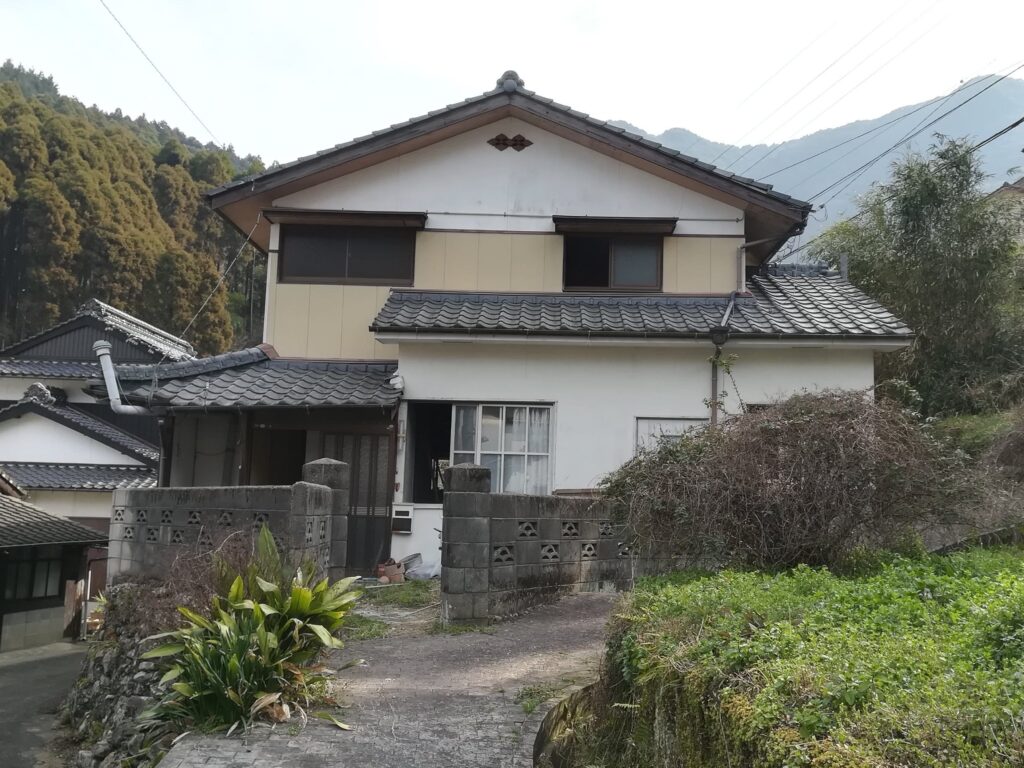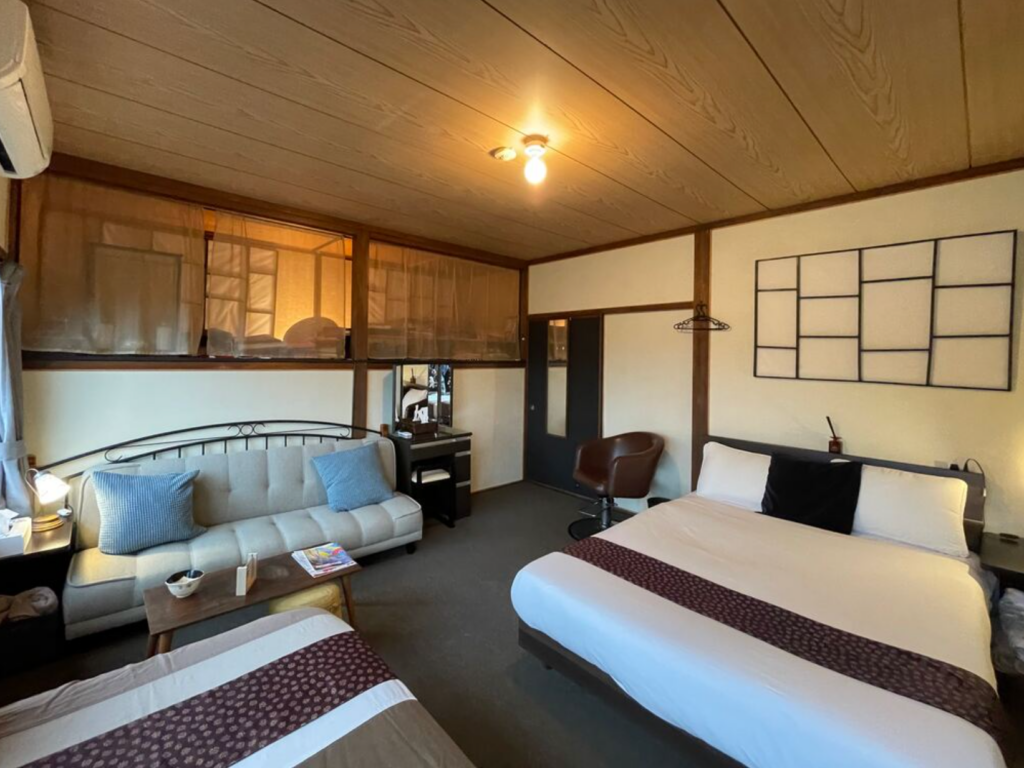- Gilles Beaufils and his wife ditched Tokyo city life to renovate an abandoned house in rural Japan.
- Beaufils, 56, estimates they spent less than $10,000 buying the abandoned property, or akiya, on Kyushu island.
- While they did most of the work themselves, he says they’ll never take on a project like that again.
After three decades of working in Tokyo, Gilles Beaufils decided he needed a change of scenery.
The 56-year-old Frenchman arrived in Japan as a backpacker in the early ’90s. He met his wife right before he was about to head off for his next destination. In the end, he never got on the plane.
“I decided to stay a little bit more, and a little bit more, and that was it basically,” Beaufils told Insider. “I’ve been married to her for over 30 years.”
The couple have a 31-year-old son.

Since the couple ran their own businesses — in both video production and real estate management — Beaufils realized that there was no obligation for them to be working in the city.
“Because of what we do, it’s not like we’re busy every day,” Beaufils said. “When we have downtime, instead of staying in Tokyo, it is better to be in the middle of nature.”
The plan was to build a base where they could live and still work while away from the concrete jungle, he said.
Apartment? No, akiya.

Kyushu is located southwest of mainland Japan, and includes numerous cities such as Fukuoka, Kumamoto, and Nagasaki — where an atomic bomb was dropped during World War 2.
The couple decided they wanted an akiya. Akiyas are old, abandoned houses in rural areas of Japan.
They spent hours trawling akiya banks — databases maintained by the local municipalities for abandoned or vacant houses — looking for the right property.
Eventually, the couple found what they were looking for.

The property that they set their sights on was a traditional Japanese home in Okawachiyama, a rural village known for its rich pottery-making history.
The abandoned home was over a century old, and had been left vacant for the past 10 years, Beaufils said.
“The people who used to live there died and the kids didn’t want to take over,” he said. “But I enjoy doing renovation and interior decoration, and owning an akiya was the perfect chance for me to work on these kinds of things.
Mostly DIY, but never again
It took Beaufils, his wife, and his son four months to renovate the entire abandoned home during the winter of 2019.
Despite the cold weather, it was the perfect time for them to take on the project because of their work schedule.

Since work was flexible, the trio could mostly focus on renovating the place. It would have been difficult to get anything done otherwise, Beaufils added.
The family renovated most of the property themselves, he said.
“We did all that we could do and then we left the electricity and plumbing jobs to the professionals,” he said.
While the renovation process was fun, Beaufils said he would never do this again because it was physically and mentally arduous.

They worked six days a week for four months with few breaks and sometimes even had to squeeze in trips back to Tokyo to attend to work matters, he said.
Luckily, his in-laws live about 20 minutes away from the akiya, and the three of them could stay there for the first two months while working on the restoration project.
Since Saga faces the sea, the area experiences high humidity levels that can be damaging to wood structures like the couple's akiya.
"The place was not in bad condition, but we needed to do a lot of things because of the moisture," he added.Moreover, the place had been abandoned for 10 years and had an old electrical system that needed replacement, he said: "We changed everything, including the flooring."
Good size, good location

The akiya is just over 1,800 square feet and is located right in the middle of the village. Beaufils said he paid less than $10,000 for the home.
"And when I say the village is very small, it is really very small," Beaufils said. "There are no shops at all, no convenience store, nothing — except about 30 potters that still work on their craft in that village."

Right off the bat, Beaufils noticed the property's potential — not just as a house for himself, but also as a base for any businesses if he wanted to start one down the road.
"Why I named it 'Base Camp Imari' was because it was a place for us to be able to work, and to go and come back from Tokyo," Beaufils said.
But based on his own entrepreneurship experiences, the idea of turning the akiya into a business was always in the back of his mind.

Just a few months after they completed the restoration project, Beaufils decided to open his akiya as a café and traveler's lodge to the public.
The couple decided that they only wanted to rent one large room out to guests in their lodge. The room sleeps four guests but will accommodate only a single group at a time.
In addition to the bedroom and the bathroom, the guests also have access to a multi-purpose room that comes with amenities, including a microwave and a fridge.

All other rooms are shared spaces, including an activity room where the couple runs kimono experience and Japanese sweet-making workshops, Beaufils said.
Visitors can book a stay at the lodge for $67 a night on Airbnb.
There are at least 649 listings of traditional homes in Japan that can be rented on Airbnb and they're scattered all across the country.
Business picked up after pandemic restrictions eased
The place became much more popular with tourists than Beaufils initially expected, but the COVID-19 pandemic slowed everything down.
"For three years, business became very slow, but we were working on our other businesses while staying in the countryside, which was good," he said. "We would have been in Tokyo otherwise."

Once the pandemic restrictions started to ease, travelers started coming back to Japan in troves, he said.
During that time, the couple decided to move out of the lodge and to the town of Itoshima in Fukuoka, which is a 40-minute drive away. Fukuoka is about an hour and 45 minutes from Tokyo by plane.
Beaufils and his wife now split their time between their home and the lodge. They're usually at the lodge over the weekends or whenever there's a booking.
"We have one full-time staff in charge of the café, and then we have two to three people who come to help. And then we have me and my wife for the rest of the things, including the lodge, the paperwork, the gardening," Beaufils said.

The café that the couple operates serves lunch as well as coffee and desserts, and is open to the public.
A cheap abandoned house might not be so cheap in the end
The most important thing about buying an akiya is not rushing into the purchase just because the price is low, Beaufils said.
"There are a lot of disastrous places all over," he said. "Finding the right place takes a really long time, because looking at the property through photos and seeing it in reality are two different things."
Photos don't always show the extent of the deterioration of the abandoned home, especially if it's a century old like his akiya, he said.

"They don't show you the moist, they don't show you the termites, they don't show you these kinds of things in the photos," he added.
Above all, those interested in buying akiyas should have an idea of how they intend to restore the property before biting the bullet.
"Are you going to make the reform yourself or you are going to ask somebody to do that?" Beaufils said. "Especially if you are overseas because you need to have a visa or you can only come three months at a time."
Even those living in Japan but working full-time might end up outsourcing the project to external contractors due to their schedules, which can cause costs to balloon.
"There are a lot of opportunities to live in the beautiful countryside with a nice cheap house. But you have to be careful also because sometimes, at the end of the day, it's not so cheap anymore," Beaufils added.
Have you recently bought or renovated your dream home and want to share the details and photos of the process? Email this reporter, Amanda Goh, at [email protected].
